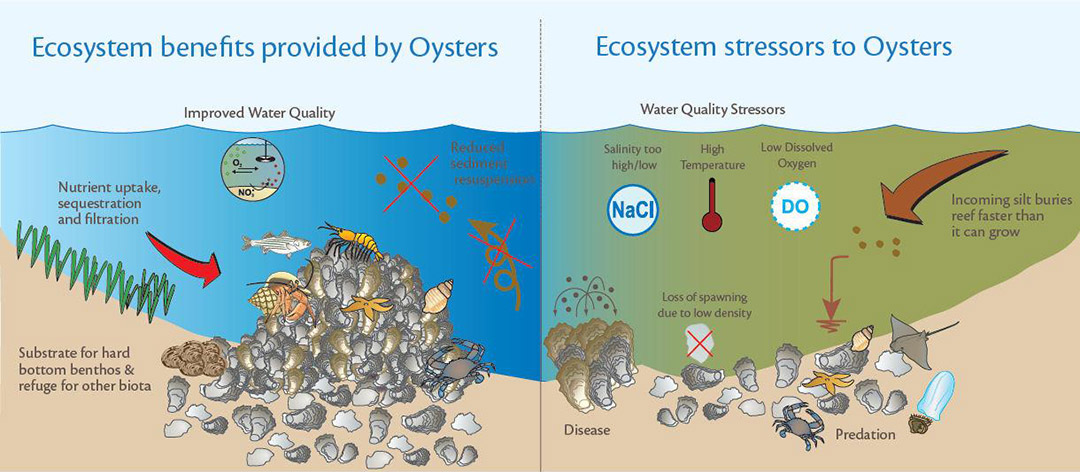Weather and Oysters
Because oysters are sessile animals, they cannot just get up and move when conditions are not ideal. Their only defence is to close their shells, but this means they cannot feed or breathe; therefore, they depend on a healthy ecosystem to thrive.

Source: Restore the Mississippi River Delta Campaign
Salinity plays a huge role in the health and growth of oysters. Oysters rely on freshwater input in order to survive. Parasites that infect oysters thrive in warm, high-salinity environments. Too high or too low salinity levels also affect the oyster’s immunity to common bacteria. Since oysters are found in areas where the oceans and rivers meet, a lack of precipitation a region (such as a drought) will limit the flow of freshwater into the estuary. This can allow for salinity values to increase.
The temperature of the water can have a significant impact on life cycle of oysters. There is a proportional relationship between water temperature and oyster growth rates. Very warm temperatures can have a negative effect on oxygen levels and thus hinder growth. An increase in water temperature can also prompt fewer oysters to spawn.